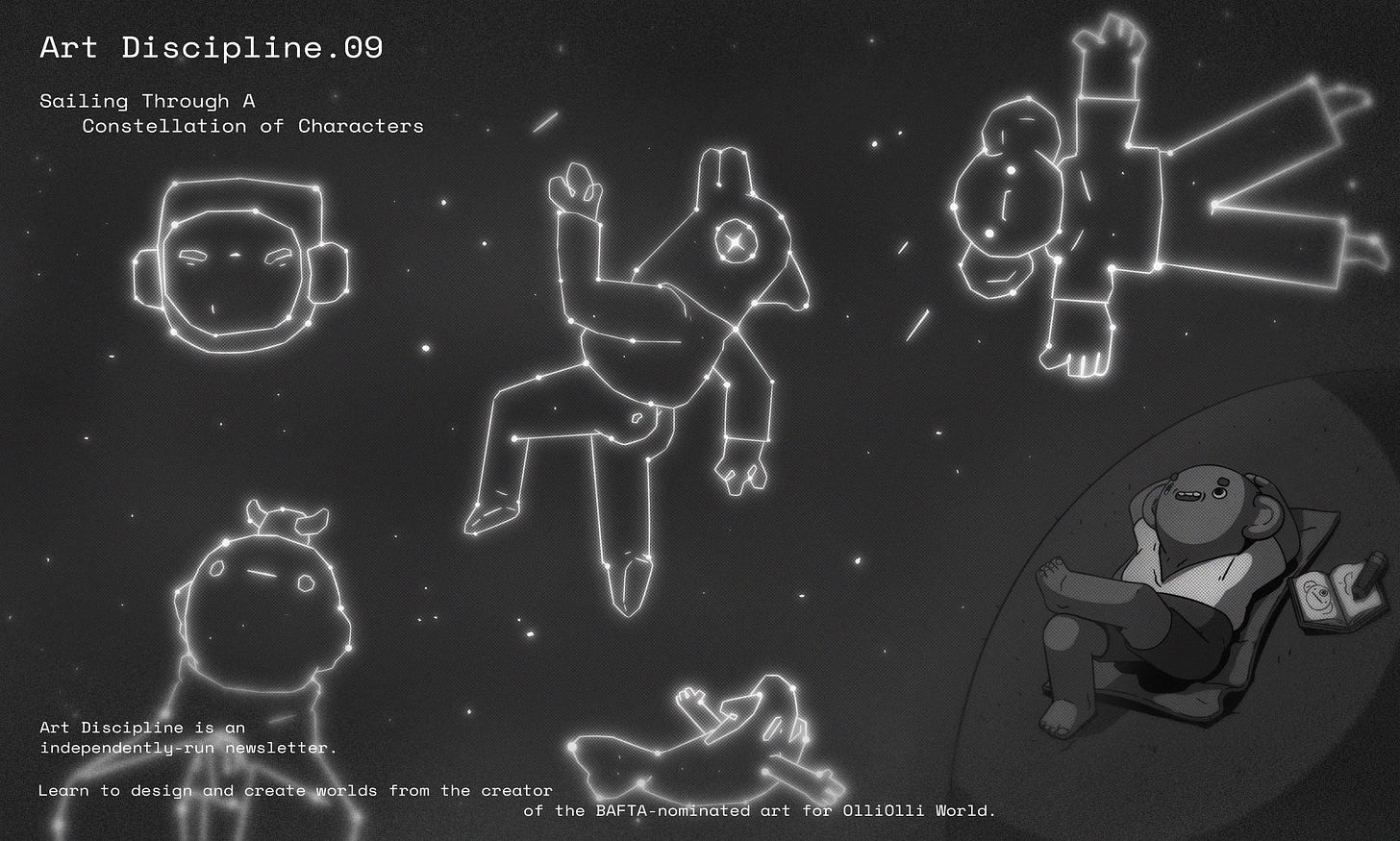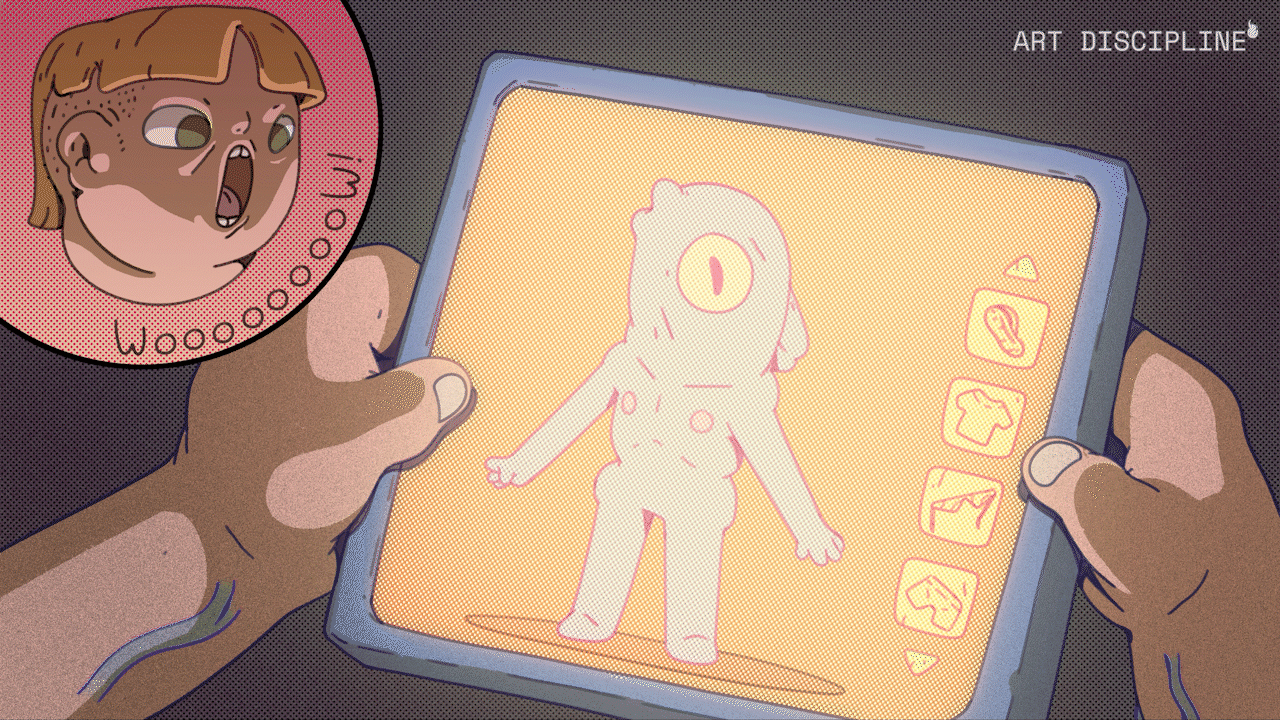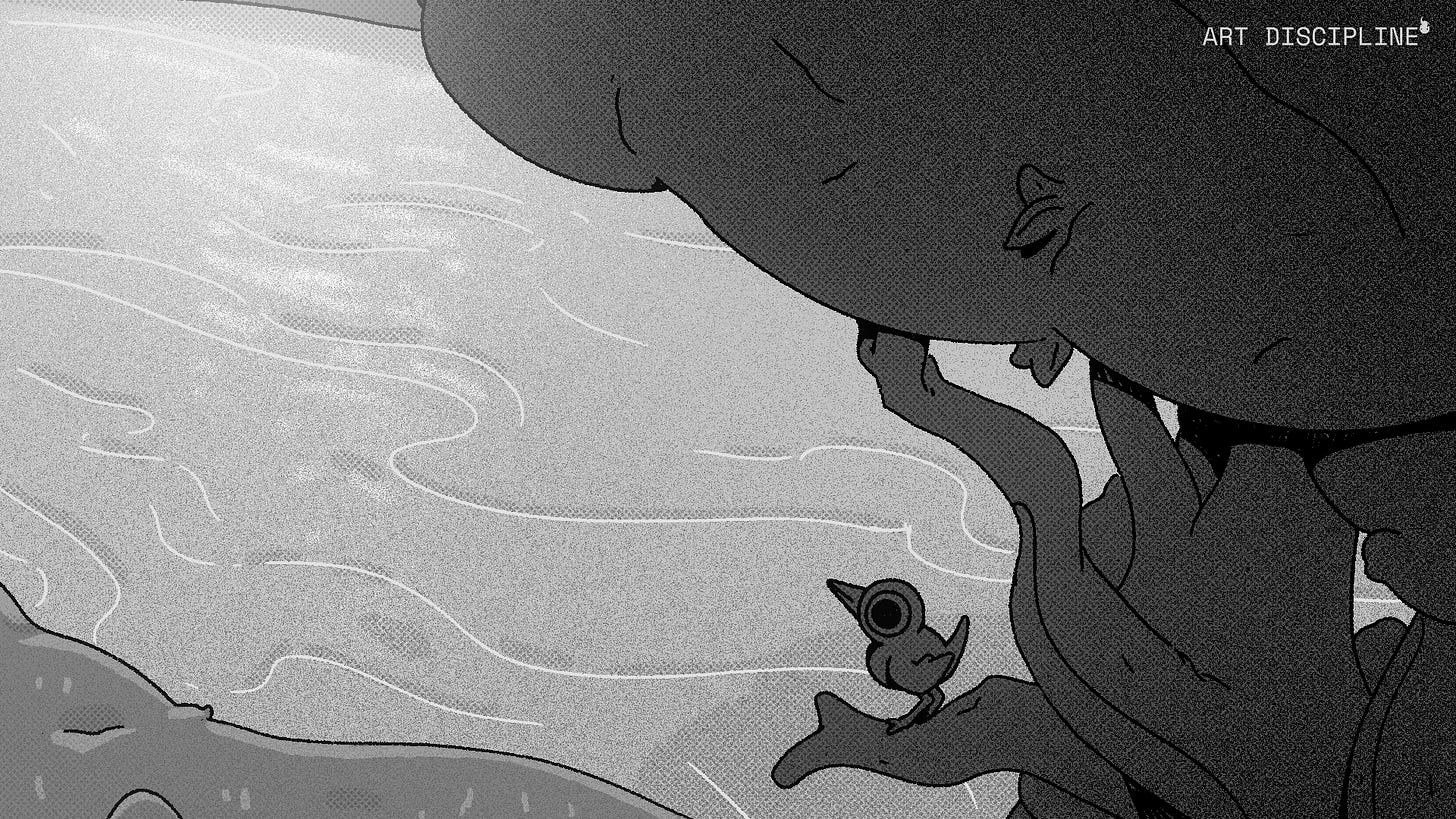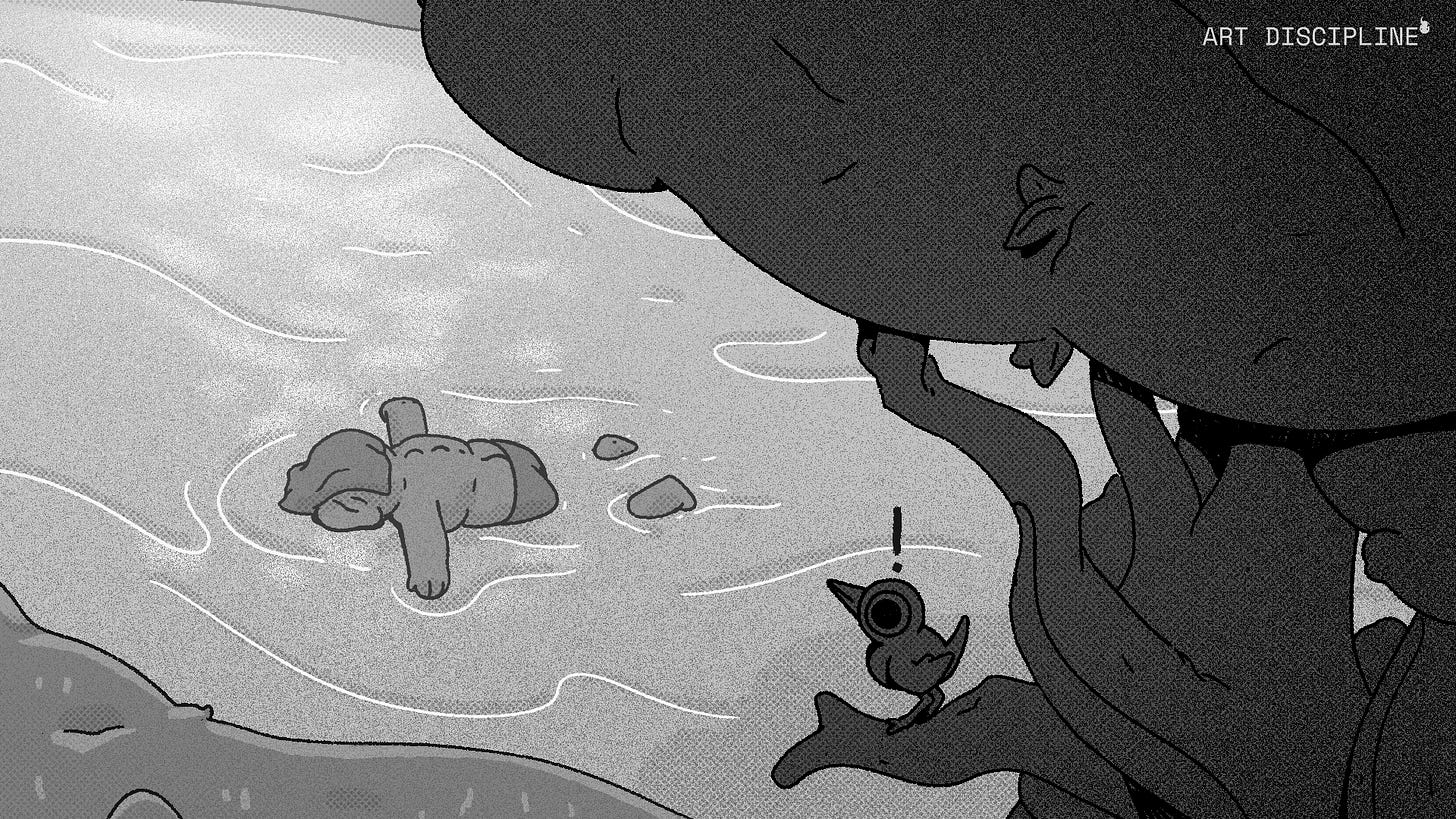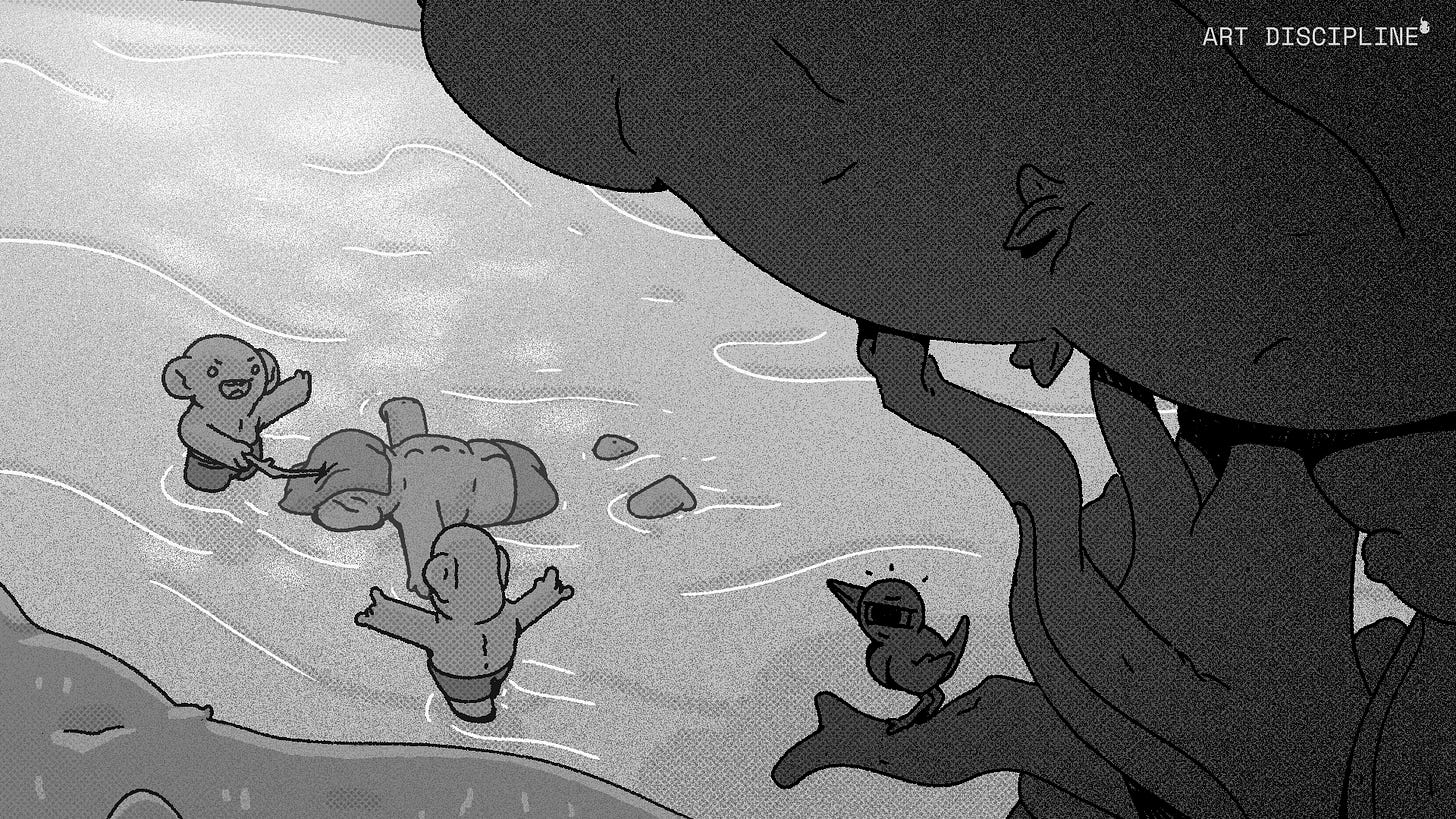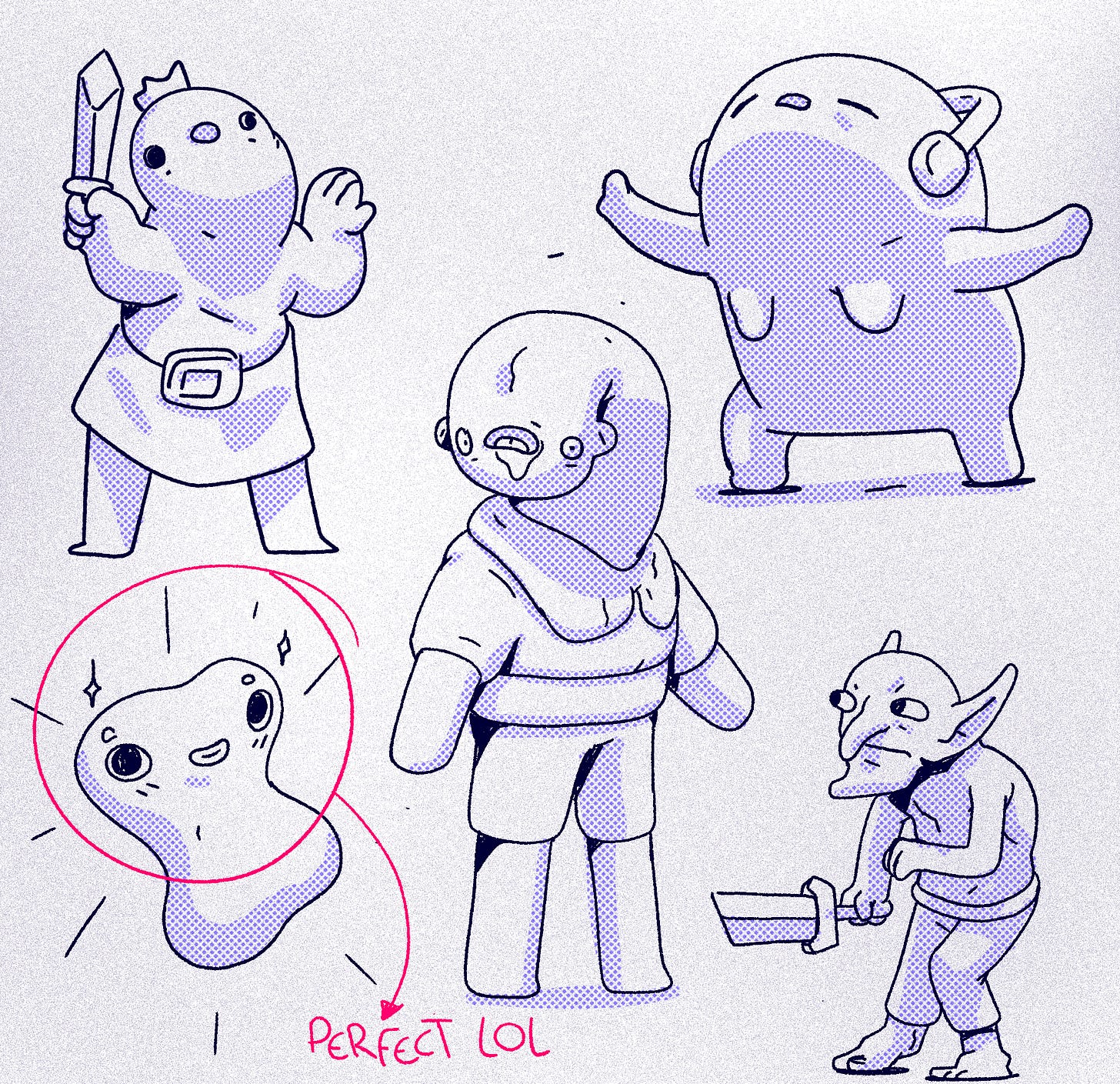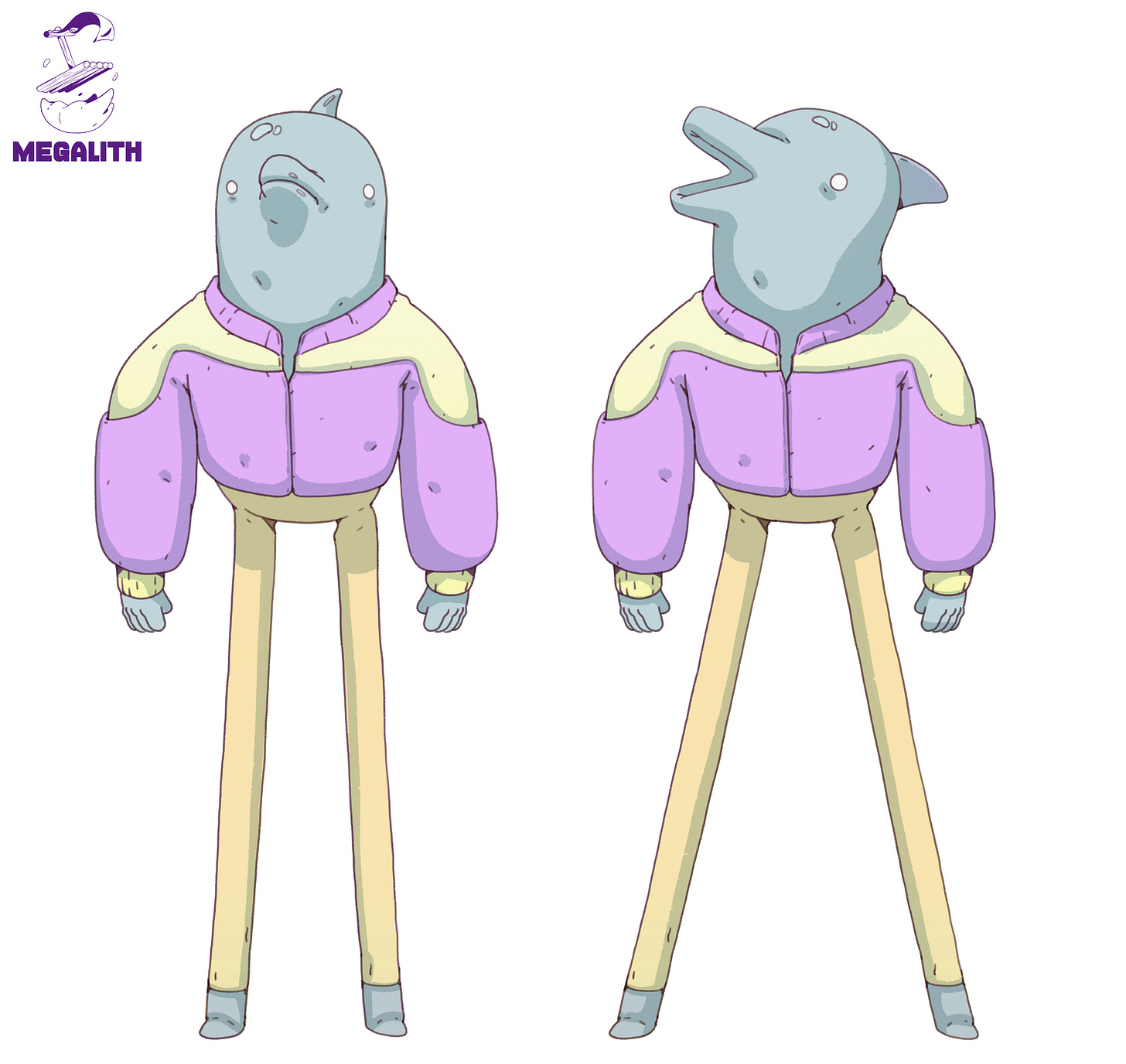Art Discipline is a monthly drop of thoughts, process, and behind-the-scenes from the artist behind OlliOlli World (BAFTA-nominated). Dive into character design, world building, and the weird joys of making art. Stay weird.
There’s an attraction toward characters. That’s why we spend hours in games playing with the customization menus or buying accesories just to make them look cooler, more us.
Environments can tell stories and set a mood, but we don’t connect to them in the same way we do with characters. The effort is not symmetrical on how easily we read them.
Sure, people get excited exploring a beautiful environment but there’s a different hierarchy when it comes to empathy.
“Wow, what a game! So many options!”
Characters Create the Context
Now: What does the following scene make you feel?
And now?
Okay, maybe I tricked you with not the best example. You can add a dead body to anything and it changes the vibe.
How about this:
Now you have more info like how deep is the river, oh well…
Nevermind, I tried.
My point is: you can keep the same lighting, the same birds, the same trees. But as soon as a character enters the frame, everything changes. Your brain starts creating a story, trying to fill in the gaps, to understand.
Sometimes we can play with this by choosing how much we show, or by revealing something that makes the viewer reframe what they thought they knew. That’s the invisible duel between storyteller and spectator.
It’s like when a friend tells you something that happened to them but most people are brief or don’t give all the details so your brain starts filling in the blanks automatically. Like, how people were dressed, the color of the cars, anything really.
Last drop, I shared an overview of Megalith, the comic I’m making with Lizz Lunney. In the journey of our heroes, we introduce a wide cast of characters. Some directly impact the main storyline; others just shift your perception of the world.
Every character adds a piece to the larger puzzle of the universe.
Setting Your Mind to Design Characters
This drop shows some broader ideas about character design, in future drops we will get deeper into more specific aspects of character design. This is the topic I get more requests for in socials or in my mentorship sessions/portfolio reviews. We will also see practical cases of designs I have made for video game and animation projects that you may have played or watched :)
The process starts with the idea: who is this character, what’s their context, and what are they about?
I explore different shapes to see what feels right. A mix of exploration and intuition.
Once we are happy with the visual design (this process goes through different iterations that I will cover in another drop), the character gets reinforced by the acting (poses, expressions, how they deliver lines). I try not to overthink, trusting what feels right is key.
Sometimes the process goes in reverse, I explore characters thinking about the world we are creating and some catches Lizz’s attention so she takes that design to inspire a character in development for the story. We have had many cases like this where We feed off each other’s creative process.
Like one of our characters from Megalith, Donnie Voyaggio:
I created this character sheet exploring some characters on what I felt could be right for this story. Then Lizz thought this guy was right for a character she had in mind and we moved forward with it.
I rewatched Twin Peaks recently, and it’s amazing how each character is built. They’re strange, mysterious, and memorable. David Lynch is a master at building characters that stand out (even before they speak).
Of course, characters don’t exist in a vacuum. The environment and other elements (like sound) also set the mood.
Characters are mostly built through actions and dialogue but we get the added layer of design. We can tell a story visually before the character even moves.
That’s always my goal in character design: to create visual storytelling that sparks curiosity, even in stillness. A design that speaks before the character says a word.
Don’t limit your character creation to what’s traditionally “the correct way”. Do what your taste dictates and stay weird.
This newsletter is for you so if there’s something you’re struggling with in your character design work, reply and let me know. I might cover it in a future drop.
Art Discipline is an independently-run newsletter. If you’ve enjoyed it, consider sharing it with others.
Character Design Tutorial and Free Brushes here!
Thanks for reading Art Discipline by Germán Reina! Subscribe for free to receive new posts and support my work.





